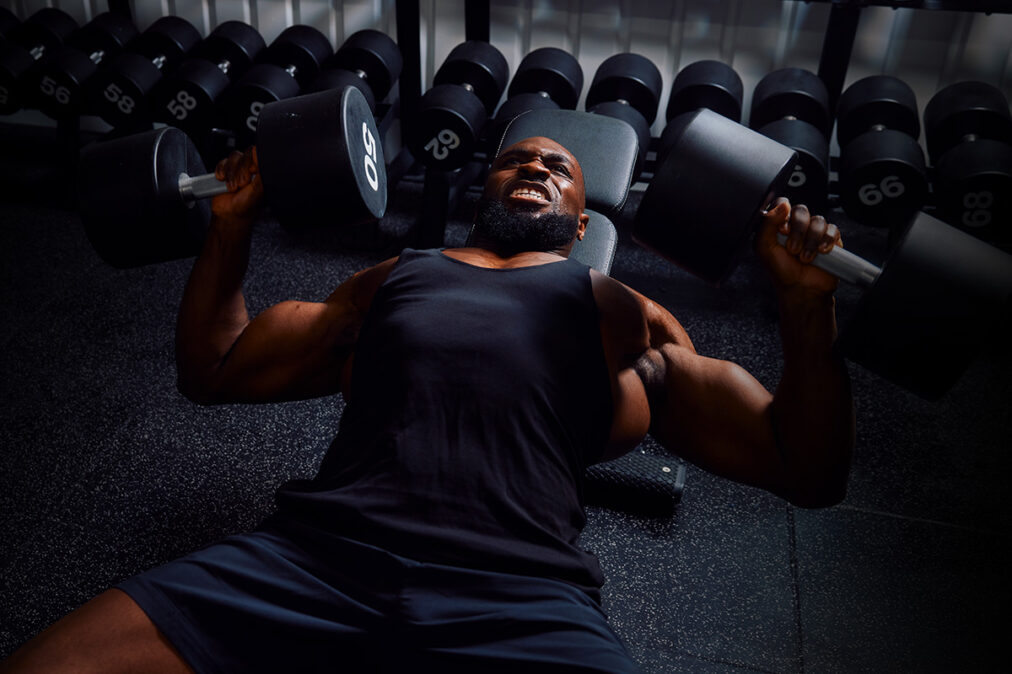Progressive Overload: The Key to Continuous Muscle Growth
One of the biggest reasons beginners struggle to build muscle is that they aren’t consistently challenging their muscles to grow.
Simply going to the gym and lifting weights without a structured approach won’t maximize progress. The key to continuous muscle growth is a principle called progressive overload.
Progressive overload means gradually increasing the demands on your muscles over time, forcing them to adapt by growing bigger and stronger.
This guide will explain the science behind progressive overload, why it’s essential, and how to apply it effectively to your training routine.
The Science Behind Progressive Overload
Muscle growth, or hypertrophy, occurs when muscle fibers are damaged and repaired through resistance training.
When you lift weights, your muscles experience microscopic tears. In response, the body repairs and strengthens these fibers, making them bigger and more capable of handling future loads.
However, if you keep lifting the same weight for the same number of reps, your body has no reason to grow further.
This is where progressive overload comes in—it forces your muscles to continuously adapt by increasing stress levels in a controlled and structured manner.

How to Apply Progressive Overload
There are multiple ways to implement progressive overload, and the best approach depends on your experience level, goals, and recovery capacity. Below are the most effective strategies for increasing the challenge over time.
Increase the Weight
The simplest and most common method of progressive overload is to gradually lift heavier weights. If you’re currently bench pressing 100 lbs for 8 reps, aim to lift 105 lbs for 8 reps in your next session.
- Ideal progression: Increase weights by 2.5–5% per week, depending on the exercise.
- Best for: Strength-focused training (e.g., powerlifting, strength phases of bodybuilding).
- Caution: Avoid increasing weight too quickly, as this can lead to poor form and injury.
Increase Repetitions
Another way to apply progressive overload is by adding more reps while keeping the weight the same. If you performed 8 reps last week, try pushing for 9–10 reps before increasing the weight.
- Ideal progression: Add 1-2 reps per week until reaching the upper range of your program.
- Best for: Muscle endurance and hypertrophy training.
- Caution: Avoid sacrificing form just to squeeze in extra reps.
Increase Sets
Adding extra sets increases total volume, which is a key driver of hypertrophy. If your program calls for 3 sets of squats, try progressing to 4 sets over time.
- Ideal progression: Add 1 extra set after several weeks of adaptation.
- Best for: Bodybuilding and volume-based training.
- Caution: Too much volume without adequate recovery can lead to overtraining.
Improve Exercise Form and Range of Motion
Better execution of an exercise can place greater tension on the muscle without necessarily increasing the load.
- Ideal progression: Focus on slower, more controlled reps and a full range of motion.
- Best for: Injury prevention, muscle activation, and beginner lifters learning proper technique.
- Caution: Avoid ego lifting; prioritize form over weight.
Reduce Rest Time Between Sets
Decreasing rest periods forces your muscles to work harder with less recovery, increasing training intensity.
- Ideal progression: Reduce rest by 5–10 seconds per week (e.g., from 90 seconds to 80 seconds).
- Best for: Endurance training and fat loss while maintaining muscle mass.
- Caution: Too little rest can reduce performance, so balance intensity with strength preservation.
Increase Training Frequency
Training a muscle group more often can enhance progressive overload by increasing weekly workload.
- Ideal progression: If training chest once per week, consider training it twice per week.
- Best for: Intermediate to advanced lifters looking to break plateaus.
- Caution: Ensure adequate recovery time to avoid overtraining.
Use Advanced Training Techniques
Incorporating intensity-boosting methods like drop sets, supersets, and rest-pause training can help push past plateaus.
- Drop Sets: Perform a set until failure, then immediately reduce the weight and continue.
- Supersets: Pair two exercises back-to-back with no rest.
- Rest-Pause Training: Perform a set to failure, rest for 10–15 seconds, and continue for extra reps.
- Best for: Intermediate and advanced lifters needing extra stimulus.
- Caution: These techniques can be taxing, so use them sparingly.
Avoiding Common Mistakes with Progressive Overload
While progressive overload is essential for growth, improper application can lead to injury, burnout, and stalled progress. Here are the most common mistakes to avoid:
Increasing Weight Too Quickly
Progressive overload should be gradual. Jumping up in weight too soon can lead to poor form and injury.
Solution: Follow a structured progression plan, increasing by small increments each week.
Ignoring Recovery
Muscle growth happens outside the gym, during recovery. Training too often or too intensely can lead to overtraining.
Solution: Ensure proper sleep, nutrition, and rest days to allow full recovery.
Not Tracking Progress
If you’re not tracking your workouts, you may not realize when you’ve stopped progressing.
Solution: Keep a training log to monitor weight, reps, sets, and other progression factors.
Focusing Only on Weight Increases
While adding weight is a great method, it’s not the only way to overload. Strength gains aren’t linear forever.
Solution: Rotate between different progression techniques to avoid plateaus.
How to Implement Progressive Overload in Your Training Program
A well-structured program will incorporate progressive overload strategically. Here’s an example of how a beginner could implement it over four weeks for bench press:
- Week 1: 100 lbs x 3 sets of 8 reps
- Week 2: 100 lbs x 3 sets of 10 reps
- Week 3: 105 lbs x 3 sets of 8 reps
- Week 4: 105 lbs x 3 sets of 10 reps
This method ensures consistent progress without overwhelming the body.
Conclusion
Progressive overload is the foundation of muscle growth. Without it, your body has no reason to adapt, and your progress will stagnate.
By gradually increasing weight, reps, sets, or intensity, you can ensure continuous muscle growth and strength gains.
The key is to apply progressive overload in a structured, sustainable way—avoiding excessive jumps in weight or volume that could lead to injury.
Stay patient, track your progress, and enjoy the journey of getting bigger and stronger. Your future physique depends on it!







